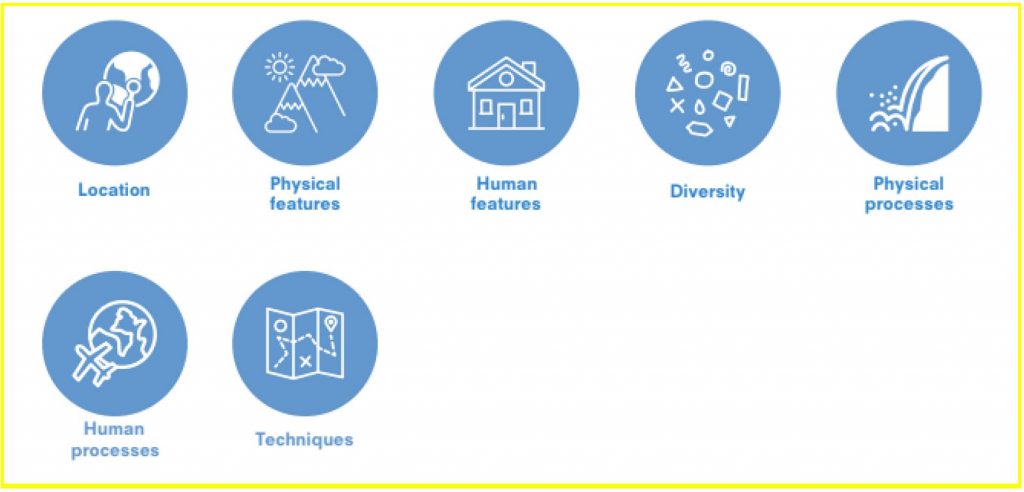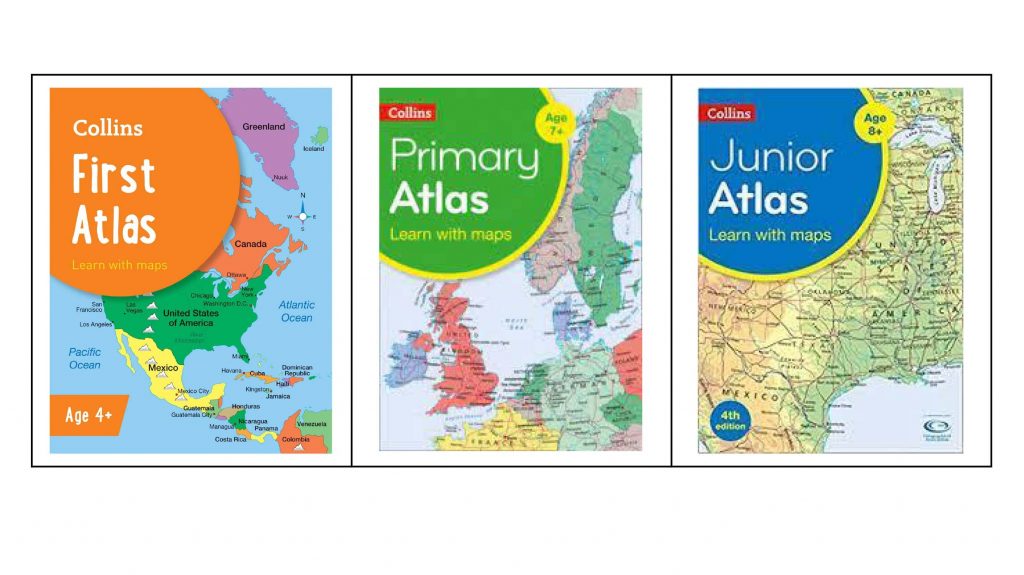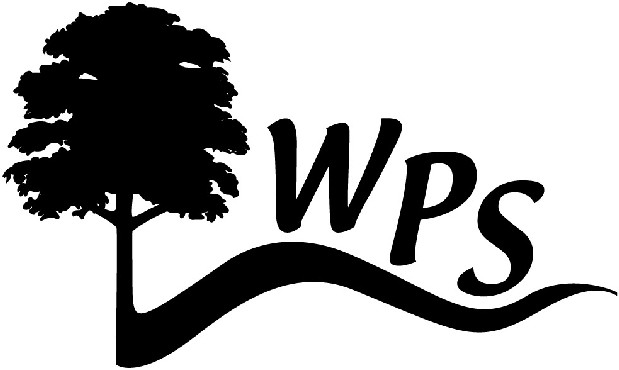Curriculum Information
Rationale
At Woodcroft, we follow the Geography programme of study outlined in the National curriculum Computing Programmes of Study: Key Stages 1 and 2, supported within the framework provided by The Essentials Curriculum. The aim of our curriculum is to ensure all pupils:
- develop contextual knowledge of the location of globally significant places – both terrestrial and marine – including their defining physical and human characteristics and how these provide a geographical context for understanding the actions of processes
- understand the processes that give rise to key physical and human geographical features of the world, how these are interdependent and how they bring about spatial variation and change over time
- are competent in the geographical skills needed to:
- collect, analyse and communicate with a range of data gathered through experiences of fieldwork that deepen their understanding of geographical processes
- interpret a range of sources of geographical information, including maps, diagrams, globes, aerial photographs and Geographical Information Systems (GIS)
- communicate geographical information in a variety of ways, including through maps, numerical and quantitative skills and writing at length
Curriculum Scope and Breadth
The scope and breadth of the curriculum at Woodcroft is shaped by our curriculum drivers, cultural capital, National Curriculum subjects and our ambition for students to study the best of what has been thought and said by many generations of academics and scholars.
National Curriculum coverage are divided into three Phases*. We call these phases Milestones
*Early Years Foundation Stage is treated as a separate milestone and has its own curriculum. Transition from Reception to Year 1 has been carefully planned.
We distinguish between subject units and threshold concepts.
- Subject topics are the specific aspects of knowledge that are studied
- Threshold concepts tie together the breadth of subject knowledge. The same concepts are explored in a wide variety of different topics throughout each milestone.. Pupils will return to the same concepts over and over; gradually deepening understanding the subject.
Threshold Concepts in Geography
- Place
- Pattern
- Communicate Geographically
These ‘Threshold Concepts’ are further developed into seven disciplinary concepts (or Knowledge Categories) concepts.
Knowledge Categories (Disciplinary Concepts)
- Location
- Physical Features
- Human Features
- Diversity
- Physical Processes
- Human Processes
- Techniques

Substantive Concepts
By organising the subject knowledge in this way we are abv to identify the core substantive concepts for each curriculum. Substantive concepts are repeated in multiple units throughout each milestone to broaden and deepen our understanding of geography.

Curriculum Progression and Assessment
We identify specific categories of knowledge that enable pupils to express their understanding of the substantive concepts. Teachers plan learning sequences to cover each of these knowledge categories, making each subject distinct.
Within each Milestone, pupils progress in their learning through three cognitive domains from basic to advancing and then deep understanding. The goal for pupils is to display sustained mastery at the ‘advancing’ stage of understanding by the end of each milestone. The most able pupils will be able to demonstrate a greater depth of understanding at the ‘deep’ stage. The time-scale for sustained mastery and greater depth is two years of study within each milestone phase.
A fundamental aspect of our curriculum are planned Proof of Progression assessment tasks. These are based on learning expectations of a milestone in each cognitive domains from basic to deep. Teachers are able to make comparative assessments of pupil progress based on how pupils independently apply their learning to these tasks at the end of each unit.
Knowledge Webs and The Tree House
Knowledge webs are published on the Treehouse. The Treehouse is our virtual learning environment. They cover the essential knowledge and vocabulary that children should learn.
Curriculum unit organisation
We have mapped out our topics in line with the National Curriculum, the sequence of units is listed in the Woodcroft Scope. See Appendix #1 for a summary of unit titles.
Curriculum Resources and Core Curriculum Texts
At Woodcroft we utilise a range of different teaching resources to support our curriculum:

As part of every Geography unit there is an identified core curriculum text.
Each Milestone also has its own set of differentiated atlass.

How are lessons sequenced?
Teachers plan a block learning sequence (BLS) by first considering the intended outcomes from the unit Curriculum Companion. This outlines what pupils need to know (or be able to do) at the end of the units to demonstrate Basic, Advancing or Deep understanding. First, teachers design a pop task that will act as proof of progress or learning. The pop task will inform the direction of learning as the sequence will be planned so the children are able to independently achieve success in the pop task. Within a sequence of lessons, teaching content will include: opportunities for vocabulary building, reading, geographical enquiry, quiz questions, modelling, guided practise and memory retrieval.
Progression of skills
To ensure teachers consolidate the children’s prior learning and knowledge, teachers use the Geography Curriculum Companion and Concept Knowledge Map
What do geography lessons at Woodcroft look like?
The structure of lessons will vary based on the topic, year group and the individual needs of the children in the class. However, effective learning sequences will include the following elements:
Purpose
- Prime the content to be learnt and how it fits in to the curriculum sequence
- Specify key vocabulary
Recap
- Establish the required prior knowledge is in place
Input
- Explain and model the new concepts
- Check for understanding
Application
- Prepare for practice – show pupils how you want them to work to represent their learning through guided proactive and worked examples.
- Provide opportunities Independent practice
Feedback
- Provide live feedback and intervene for misconceptions
- Review the learning that has taken place
- Feed forward to the next step in the sequence
* Remember, these steps can happen multiple time in a chunked lesson
Appendix 1 – Curriculum Overviews
| Year Group | Unit |
| Nursery | All about (around) me |
| All about vehicles. | |
| All about the weather | |
| Reception | All about me and my family |
| All about the Seasons and Weather | |
| Where animals and plants live (Habitats) | |
| Milestone 1 | |
| Year Group | Unit |
| Year 1 | Local Area: United Kingdom |
| Climate & Weather | |
| Describing Maps | |
| Year 2 | Mapping The World #1
Continents and Oceans Antarctica |
Australia: Physical and human features
|
|
Scotland
|
|
| Milestone 2 | |
| Year Group | Unit |
| Year 3 | Describing Maps of the World #2 |
Europe
|
|
Europe: Mountains
|
|
| Transportation: Cities
National and International Networks |
|
| Year 4 | Describing Maps of the World #3 |
Erosion and Deposition
|
|
The Water Cycle
|
|
International Trade:
|
|
| Milestone 3 | |
| Year Group | Unit |
| Year 5 | Mapping The World (M1) Revision |
| North America (Population, Rivers and Mountains) | |
| Biomes: Taiga, Tropical Rainforest, Desert | |
Earthquakes and Volcanoes
|
|
| Year 6 | Using Maps: Six Figure Grid References |
| Water Cycle (revision topic)
Local Study – Silk Stream Flood Management Project |
|
Biomes and climate zones
|
|
Plan to revisit and review concepts again at a later date
Visit a curriculum subject page by clicking the link listed below:
English Mathematics Science Computing Physical Education Music History Geography Spanish Design and Technology Art and Design Religious Education

